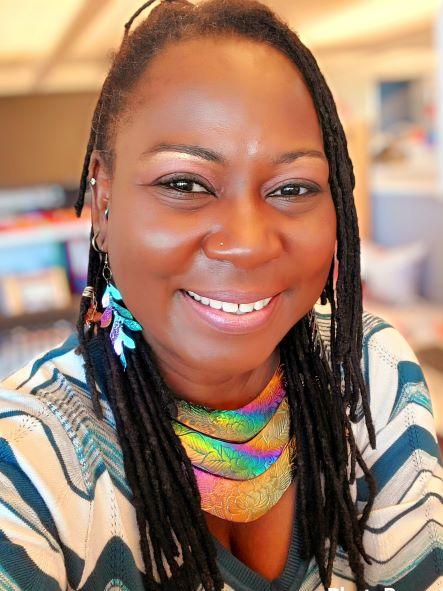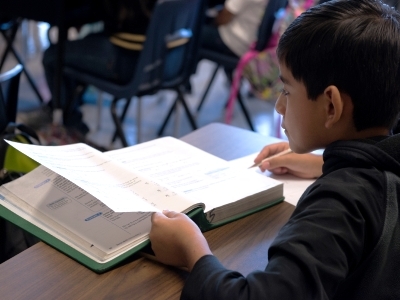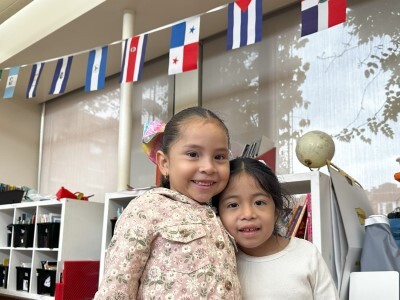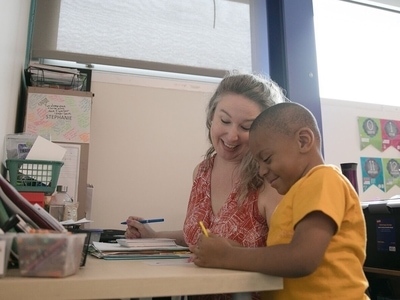The Art of Cultivating Inclusive Learning Environments
Topics
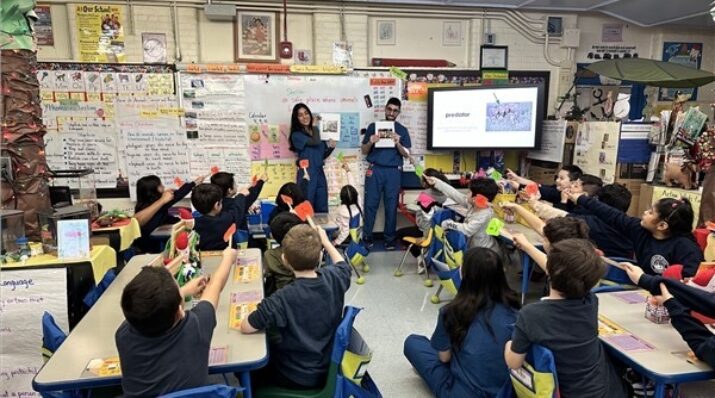
Together, educators are doing the reimagining and reinvention work necessary to make true educational equity possible. Student-centered learning advances equity when it values social and emotional growth alongside academic achievement, takes a cultural lens on strengths and competencies, and equips students with the power and skills to address injustice in their schools and communities.
Educators can tap into the expertise, resources, and advocacy of community partners to support students with disabilities, learning differences, mental health challenges, and more.
When considering the intricate work of fostering an inclusive learning environment, I view the process similar to the meticulous, patient process of creating a spectacular piece of art. Just as an artist who carefully selects their brushes, prepares their materials, and adjusts every stroke to ensure the final piece is balanced and vibrant, educators must act as designers of comprehensive support systems for students with diverse needs. It is not a matter of task lists and compliance. Instead it is a deliberate, creative commitment that transforms the classroom from a static space into a dynamic, equitable canvas where every learner—regardless of ability, challenge, or background—is recognized as an essential color in the brilliance of the final composition. Just like any work of art, cultivating inclusion demands intentional action, creativity, and collaborative expertise.
Creating an inclusive learning environment is an attainable goal; one that is educationally imperative. As educators and administrators, we recognize that our students are diverse in their backgrounds, learning styles, and needs. This includes students with physical disabilities, learning differences, mental health challenges, and various other requirements that require tailored support. An inclusive environment is one where every student feels valued, supported, and challenged to reach their full potential, regardless of their individual circumstances.
A commitment to inclusion is about fostering a culture of equity and belonging. When students with diverse needs are fully (and successfully) integrated into the school community, all students benefit. What does successful integration look like? It is most evident when we see students learn to appreciate differences, develop empathy, and collaborate in ways that reflect the real world. However, the complexity of meeting these varied needs often requires resources and expertise that extend beyond the school walls. This is where partnerships become an essential, transformative tool.
Partnerships for Inclusion
Partnerships are the backbone of a comprehensive support system for students with diverse needs. They allow schools the ability to leverage external expertise, secure specialized resources, and extend the scope of services in ways that would be difficult to achieve alone.
Partnerships play a key role in:
Specialized Training and Professional Development: External organizations often possess deep expertise in specific areas, such as trauma-informed care, assistive technology, or specialized instruction for specific learning disabilities. Partnerships allow schools to bring this knowledge directly to their teachers and staff, ensuring they have the most up-to-date skills.
Resource Augmentation: Many partnerships provide crucial resources, including access to specialized equipment, tutoring services, mental health counseling, and out-of-school-time programming that supplement and/or enhance in-school services.
Community and Family Engagement: Non-profit and community partners can often bridge the gap between school and home, helping to ensure that the support students receive is consistent and that families are empowered as active participants in their children’s education.
Advocacy and Systemic Change: Collaborating with advocacy groups helps to identify systemic barriers and work toward policy changes that promote greater equity and inclusion across school districts.
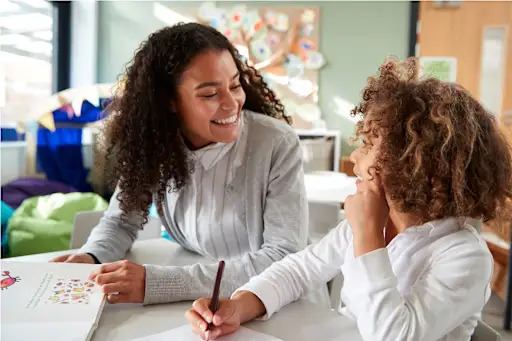
Courtesy of Boston Public Schools.
Partnerships in Action
Boston Public Schools is fortunate to have a vibrant ecosystem of community partners dedicated to student success. These collaborations provide tangible support that impacts student lives daily.
One vital example is our partnership with The Home for Little Wanderers. This organization offers comprehensive services, including behavioral health services directly within our schools. They provide critical support to students experiencing trauma, mental health challenges, or behavioral issues, helping to stabilize their emotional well-being so they can focus on learning. This embedded approach ensures students receive immediate, accessible care without having to leave the school environment.
Another significant collaboration is with the Federation for Children with Special Needs (FCSN). They operate as a vital resource, primarily helping families understand the educational process, navigate special education services, and ensure that students with disabilities receive appropriate and individualized support
How Educators Can Foster Inclusive Learning Environments
While partnerships are the backbone of a comprehensive support system, educators are the essential architects of inclusive learning environments within the classroom and school building. Their daily actions, mindset, and practices directly translate a system-wide commitment to inclusion into a reality for every student.
Educators can contribute to and create positive and inclusive learning environments through the following key areas:
Embracing an Inclusive Mindset
A foundational step is adopting a mindset that views diversity as a strength and inclusion as a continuous process, not a fixed destination.
Universal Design for Learning (UDL): When educators proactively plan lessons using the UDL framework, they design instruction, assessments, and materials that offer multiple means of engagement, representation, and action and expression from the start. This anticipates diverse needs, reducing the need for retrofitting accommodations.
Differentiated Instruction: Actively employing differentiation—adjusting content, process, or product based on student readiness, interest, and learning profile—ensures that all students are appropriately challenged and supported to meet the same learning goals.
Asset-Based Approach: Focusing on what students can do, their existing skills, cultural capital, and strengths, rather than deficits builds student self-efficacy and motivation.
Cultivating a Culture of Belonging and Respect
The feeling of being valued and safe is paramount to an inclusive environment. Educators establish this culture through deliberate social and emotional practices.
Explicitly Teach Empathy and Acceptance: Incorporating lessons on respecting differences, understanding various disabilities, and challenging stereotypes helps all students develop a deeper appreciation for diversity.
Create Safe Spaces for Expression: Encouraging students to share their perspectives and experiences, including those related to their identity or challenges, fosters a classroom where vulnerability is met with acceptance and support.
Proactive Classroom Management: Employing restorative justice and trauma-informed practices, often gained through partner-provided training, focuses on understanding the cause of behavior rather than just punishing the symptom. This preserves the student’s sense of dignity and belonging.
Leveraging Collaborative Expertise
Educators are not expected to be experts in every area. When their role includes being effective collaborators and learners, educators can create more inclusive learning environments.
Active Engagement in Professional Development: As I mentioned above, partnerships offer specialized training. Educators can improve their classroom practice by actively participating in and applying learning related to areas like assistive technology, mental health support, or specialized instruction.
Effective Teamwork and Co-Planning: Special education teachers, general education teachers, paraprofessionals, and support staff (counselors, speech pathologists) who engage in consistent, meaningful co-planning ensure that student support is truly integrated and not just an add-on. School leaders can support this effort by building co-planning time into the schedule.
Communication with Families: Serving as a primary link between the school and home, educators must maintain open, respectful, and culturally responsive communication with families to ensure a consistent support ecosystem for the student, empowering families as active participants.
By instilling these practices alongside partnerships into their daily routines, educators become the driving force that transforms the principles of inclusive education into meaningful, equitable outcomes for every student in our schools. Remember, partnerships are not meant to be merely transactional; they should represent a shared commitment to the whole student. When we pool our resources and expertise, educators, administrators, and our partners are actively constructing learning environments that are not just welcoming, but are fundamentally designed for the success of every single student. The future of inclusive education depends on the strength and breadth of these collaborative efforts.
Photo at top courtesy of Boston Public Schools.

